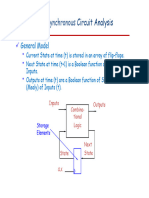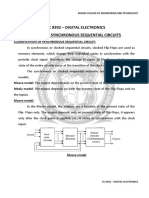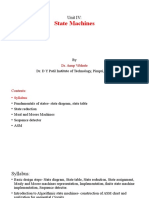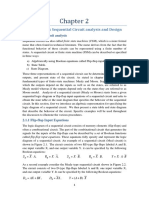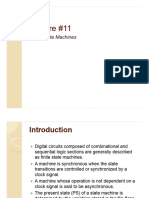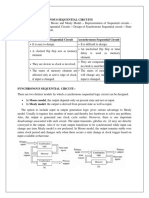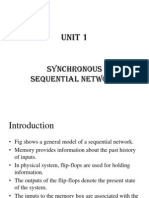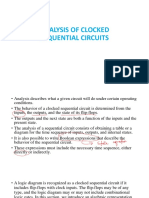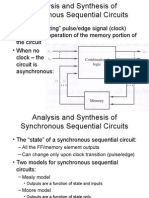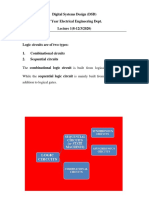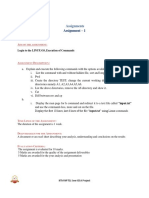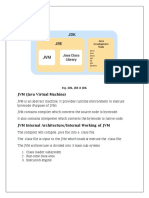0% found this document useful (0 votes)
89 views23 pagesSequential Circuit Analysis Guide
- Sequential circuits contain flip-flops that store the current state and combinational logic that determines the next state and outputs based on the current state and inputs.
- They can be modeled with state tables that define the next state and outputs for each state-input combination, state diagrams that show state transitions graphically, or with Boolean equations.
- Sequential circuits can be described by either Moore or Mealy models, which differ in whether outputs depend solely on state (Moore) or on both state and inputs (Mealy).
Uploaded by
Queences HazaCopyright
© © All Rights Reserved
We take content rights seriously. If you suspect this is your content, claim it here.
Available Formats
Download as PDF, TXT or read online on Scribd
0% found this document useful (0 votes)
89 views23 pagesSequential Circuit Analysis Guide
- Sequential circuits contain flip-flops that store the current state and combinational logic that determines the next state and outputs based on the current state and inputs.
- They can be modeled with state tables that define the next state and outputs for each state-input combination, state diagrams that show state transitions graphically, or with Boolean equations.
- Sequential circuits can be described by either Moore or Mealy models, which differ in whether outputs depend solely on state (Moore) or on both state and inputs (Mealy).
Uploaded by
Queences HazaCopyright
© © All Rights Reserved
We take content rights seriously. If you suspect this is your content, claim it here.
Available Formats
Download as PDF, TXT or read online on Scribd
/ 23

